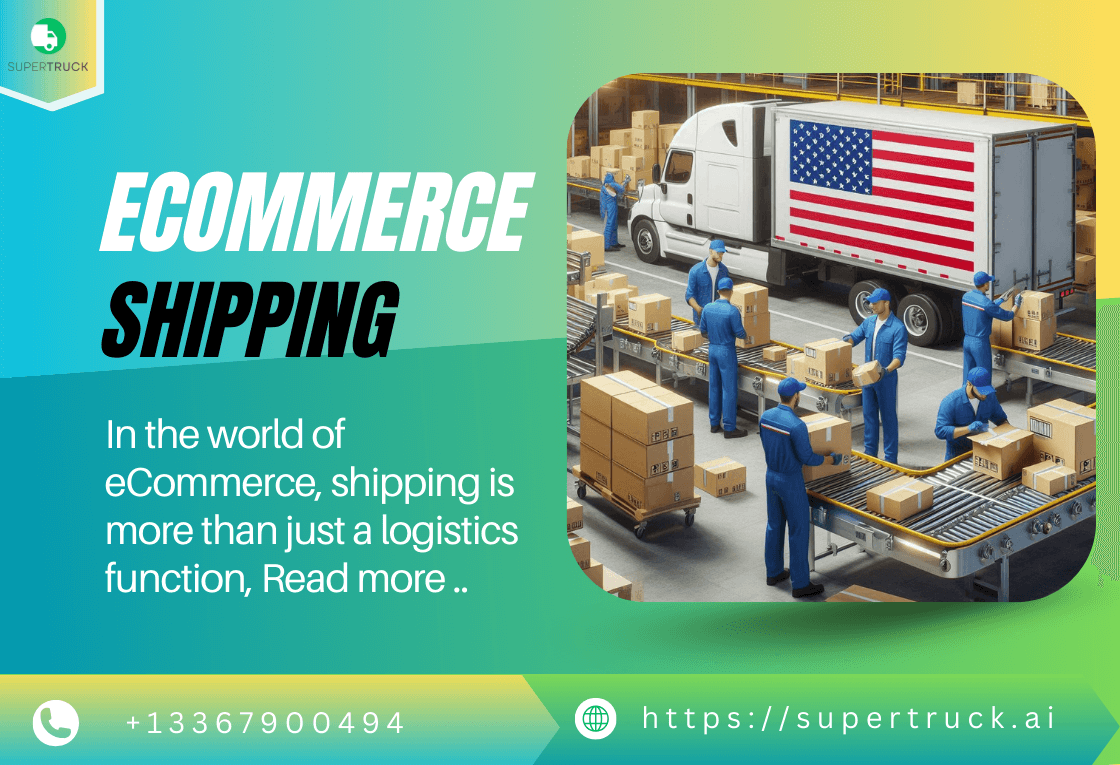
Technology

In eCommerce, shipping is more than just a logistics function; it's a crucial component of the customer experience. In the USA, where online shopping is booming, mastering the art of shipping can set your business apart. Whether you’re a small startup or a large retailer, understanding the intricacies of eCommerce shipping can streamline operations and enhance customer satisfaction. Here’s a comprehensive guide to eCommerce shipping in the USA.
1. About Shipping Options
Shipping in the USA isn't one-size-fits-all. Here's a breakdown of the primary shipping options:
1.1. Standard Shipping: Often the most cost-effective, standard shipping usually takes 5-7 business days. It’s ideal for non-urgent deliveries and helps keep costs down for businesses and customers.
1.2. Expedited Shipping: For customers who need their orders faster, expedited shipping promises delivery in 2-3 business days. It’s a bit pricier but meets the demand for quick service.
1.3. Same-Day and Next-Day Shipping: Offering same-day or next-day delivery can be a game-changer for customer satisfaction, especially in urban areas. However, it requires efficient logistics and may involve higher costs.
1.4. International Shipping: If you’re catering to international customers, understanding customs regulations and international shipping costs is crucial. Many eCommerce platforms offer integrated solutions for international shipping.
2. Choosing the Right Shipping Carrier
The USA has a range of shipping carriers, each with its strengths:
2.1. USPS (United States Postal Service): Known for its reliability and cost-effectiveness, USPS is a popular choice for small and medium-sized businesses. It offers various services, including First-Class Mail and Priority Mail.
2,2. Supertruck.ai (Super Truck Logistics Inc.): Supertruck.ai has become a technology-enabled of organization that provides on-demand logistics and transport solutions to provide customers with the most convenient way to book their truck loads.
2.3. UPS (United Parcel Service): UPS is known for its extensive network and reliable tracking. It’s a good option for businesses needing a range of services, from ground to air shipping.
2.4. FedEx: FedEx offers a variety of shipping solutions, including express and ground services. It’s well-regarded for its fast delivery and tracking capabilities.
2.5. DHL: Although primarily focused on international shipping, DHL also offers domestic services. It’s known for its speed and global reach.
3. Shipping Costs and Strategies
Managing shipping costs is vital for maintaining profitability. Here are some strategies to consider:
3.1. Negotiate Rates: Many carriers offer discounted rates for businesses based on shipping volume. Don’t hesitate to negotiate rates or explore third-party logistics providers that can secure better deals.
3.2. Offer Free Shipping: Free shipping can boost conversions, but it’s important to factor these costs into your pricing strategy. Consider setting a minimum order amount to qualify for free shipping.
3.3. Implement Flat-Rate Shipping: Flat-rate shipping simplifies the process for both businesses and customers. It provides a consistent cost for shipping, which can enhance transparency and predictability.
3.4. Use Shipping Software: Shipping software can streamline the process, offering features like automated label printing, real-time tracking, and integration with eCommerce platforms. Popular options include ShipStation, Shippo, and EasyShip.
4. Shipping Methods:
5. Managing Returns
An efficient returns process is as important as shipping itself. Consider the following:
5.1. Clear Return Policies: Make your return policies easy to understand. Clearly outline the process, timelines, and any associated costs.
5.2. Prepaid Return Labels: Offering prepaid return labels can simplify the return process for customers and enhance their overall experience.
5.3. Efficient Processing: Streamline your returns processing to quickly handle returned items, update inventory, and issue refunds or exchanges.
6. Enhancing Customer Experience
Shipping is a critical touch point in the customer journey. Here’s how to enhance the experience:
6.1. Provide Tracking Information: Keep customers informed with real-time tracking updates. This reduces anxiety and helps customers plan for delivery.
6.2. Offer Delivery Options: Allow customers to choose their preferred delivery options, such as delivery windows or pickup locations.
6.3. Communicate Clearly: Send confirmation emails, shipping updates, and delivery notifications. Clear communication helps manage expectations and reduces customer inquiries.
7. Staying Compliant
Ensure that your shipping practices comply with all relevant regulations:
7.1. Tax and Duties: For international shipments, be aware of tax and duty implications. Make sure your pricing and shipping policies reflect these considerations.
7.2. Packaging Requirements: Follow packaging guidelines to protect products and comply with carrier requirements.
7.3. Accessibility: Make sure your shipping process is accessible to all customers, including those with disabilities.
No comments yet. Be the first to comment!
05 Aug 2024
14 Aug 2024
14 Aug 2024
14 Aug 2024
16 Aug 2024
20 Aug 2024
21 Aug 2024
22 Aug 2024
23 Aug 2024
25 Aug 2024
25 Aug 2024
26 Aug 2024
26 Aug 2024
27 Aug 2024
28 Aug 2024
29 Aug 2024
01 Sept 2024
01 Sept 2024
02 Sept 2024
03 Sept 2024
04 Sept 2024
05 Sept 2024
06 Sept 2024
08 Sept 2024
09 Sept 2024
10 Sept 2024
12 Sept 2024
13 Sept 2024
07 Oct 2024
17 Oct 2024
18 Oct 2024
22 Oct 2024
29 Oct 2024
05 Nov 2024
06 Nov 2024
08 Nov 2024
11 Nov 2024
19 Nov 2024
20 Nov 2024
©copyright 2024, supertruck.ai